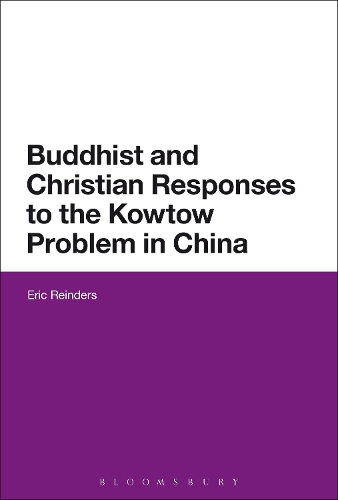
Buddhist and Christian Responses to the Kowtow Problem in China
(Hardback)
Available Formats
Publishing Details
Buddhist and Christian Responses to the Kowtow Problem in China
By (Author) Eric Reinders
Bloomsbury Publishing PLC
Bloomsbury Academic
12th March 2015
United Kingdom
Classifications
Tertiary Education
Non Fiction
History of religion
Christianity
294.343
Physical Properties
Hardback
208
Width 156mm, Height 234mm
458g
Description
The most common Buddhist practice in Asia is bowing, yet Buddhist and Christian Responses to the Kowtow Problem is the first study of Buddhist obeisance in China. In Confucian ritual, everyone is supposed to kowtow, or bow, to the Chinese emperor. But Buddhists claimed exemption from bowing to any layperson, even to their own parents or the emperor. This tension erupted in an imperial debate in 662. This study first asks how and why Buddhists should bow (to the Buddha, and to monks), and then explores the arguments over their refusing to bow to the emperor. These arguments take us into the core ideas of Buddhism and imperial power: How can one achieve nirvana by bowing What is a Buddha image Who is it that bows Is there any ritual that can exempt a subject of the emperor What are the limits of the states power over human bodies Centuries later, Christians had a new set of problems with bowing in China, to the emperor and to idols. Buddhist and Christian Responses to the Kowtow problem compares these cases of refusing to bow, discusses modern theories of obeisance, and finally moves to examine some contemporary analogies such as refusing to salute the American flag. Contributing greatly to the study of the body and power, ritual, religion and material culture, this volume is of interest to scholars and students of religious studies, Buddhism, Chinese history and material culture.
Reviews
This book makes a tremendous contribution to material studies, Buddhist history, and debates around biopolitics. -- Michael J. Walsh, Associate Professor, Department of Religion, Vassar College, USA
Author Bio
Eric Reinders is Associate Professor of East Asian Religions at Emory University, USA. He received his Ph.D. from the University of California, Santa Barbara. His first book was Borrowed Gods and Foreign Bodies: Christian Missionaries Imagine Chinese Religion (2004), and he co-authored Buddhism and Iconoclasm in East Asia: A History (2013, Bloomsbury Academic).
